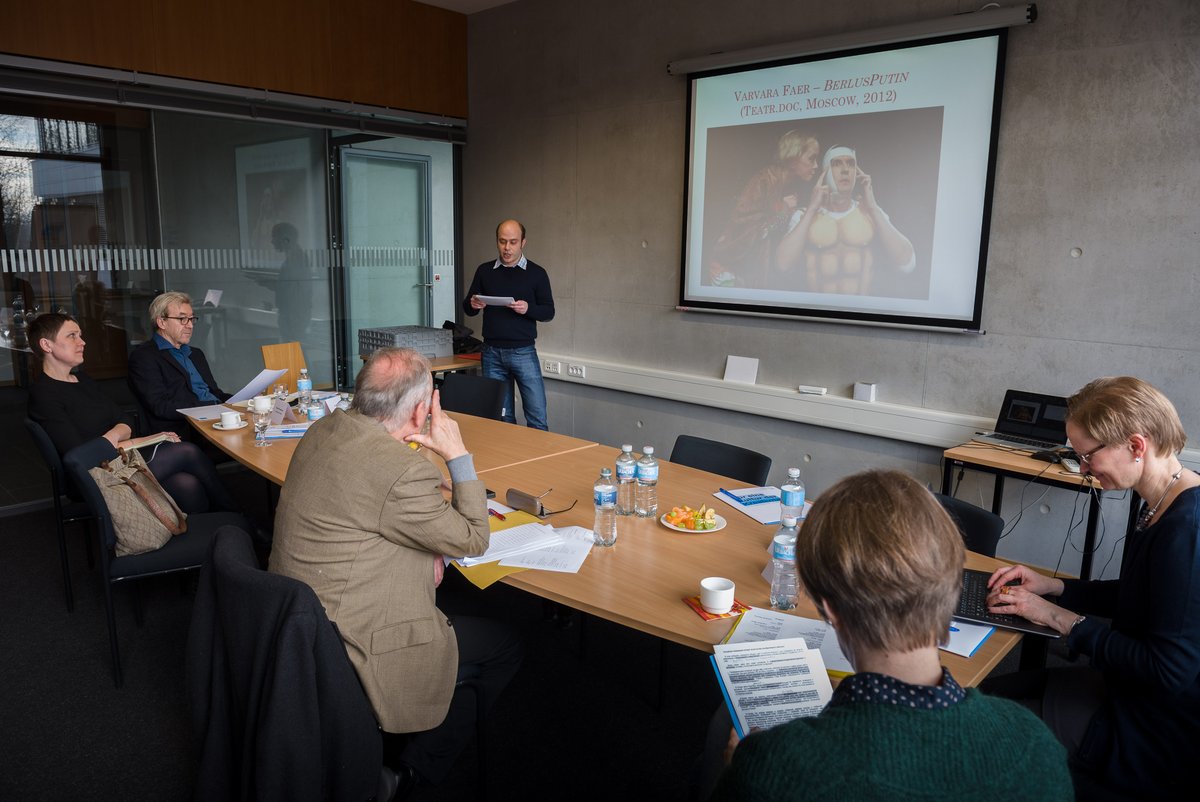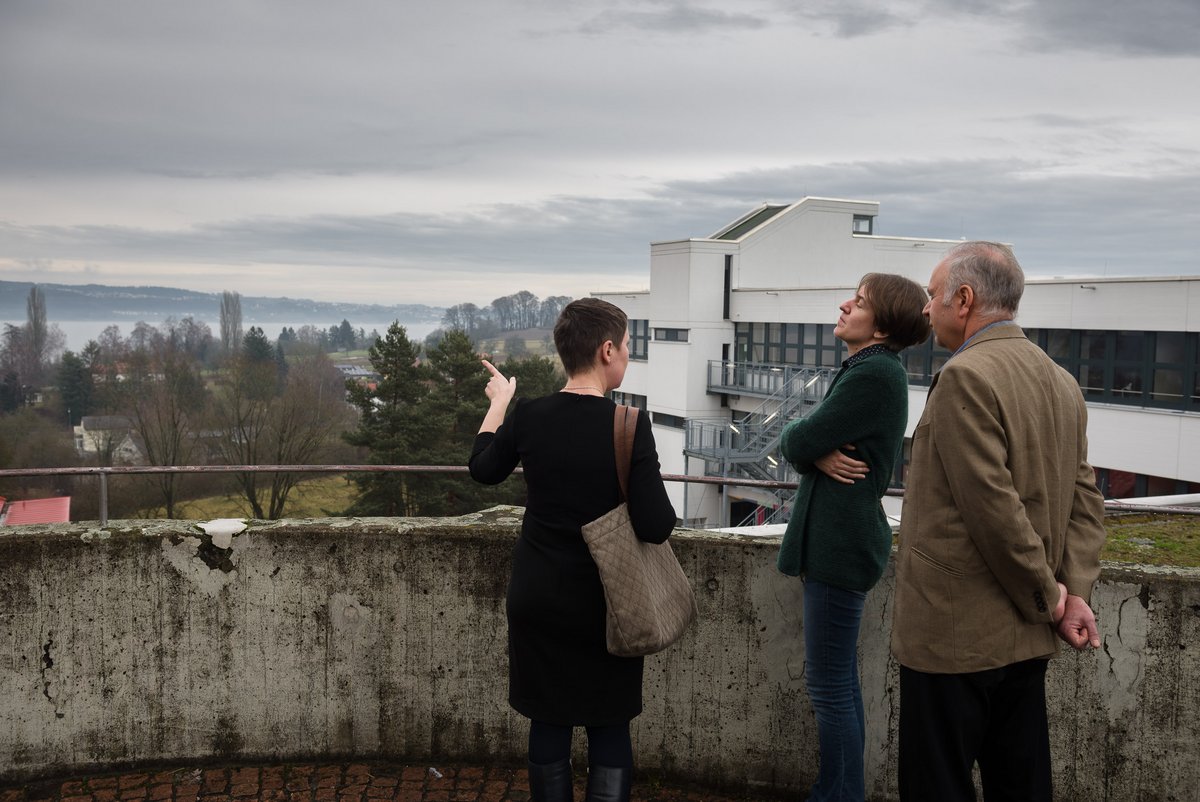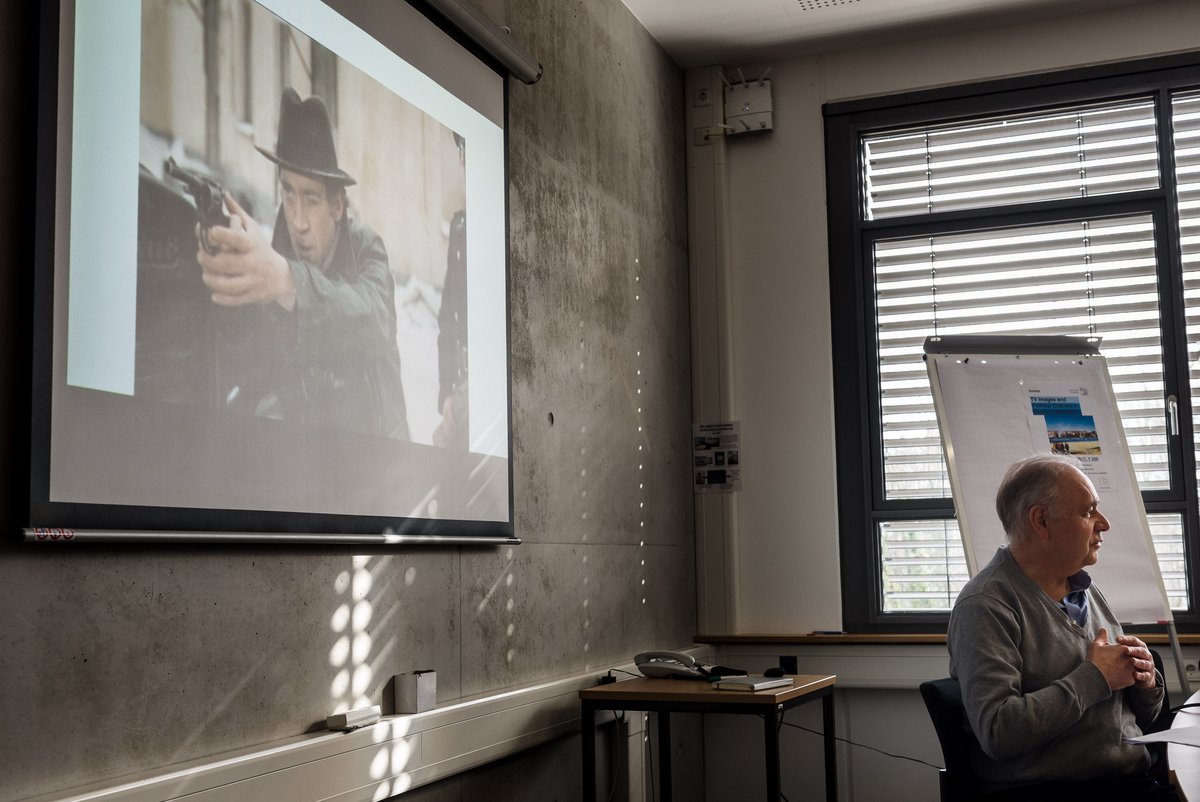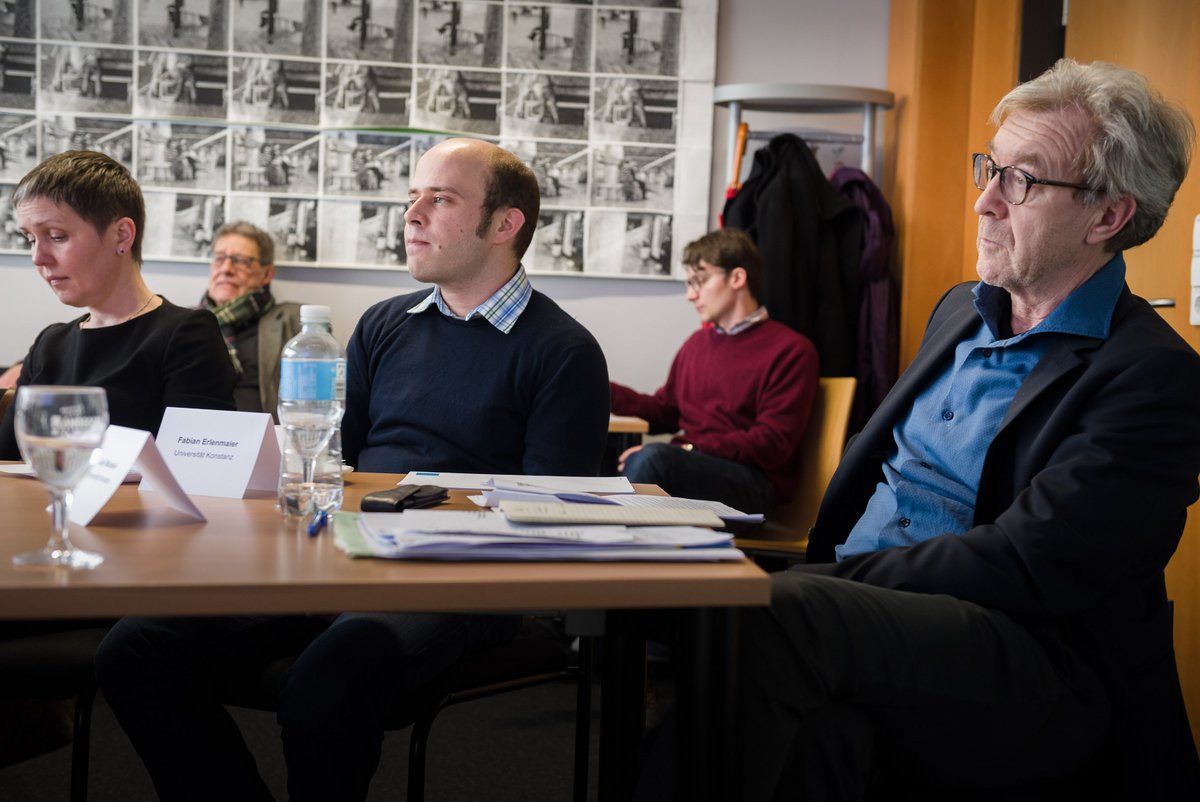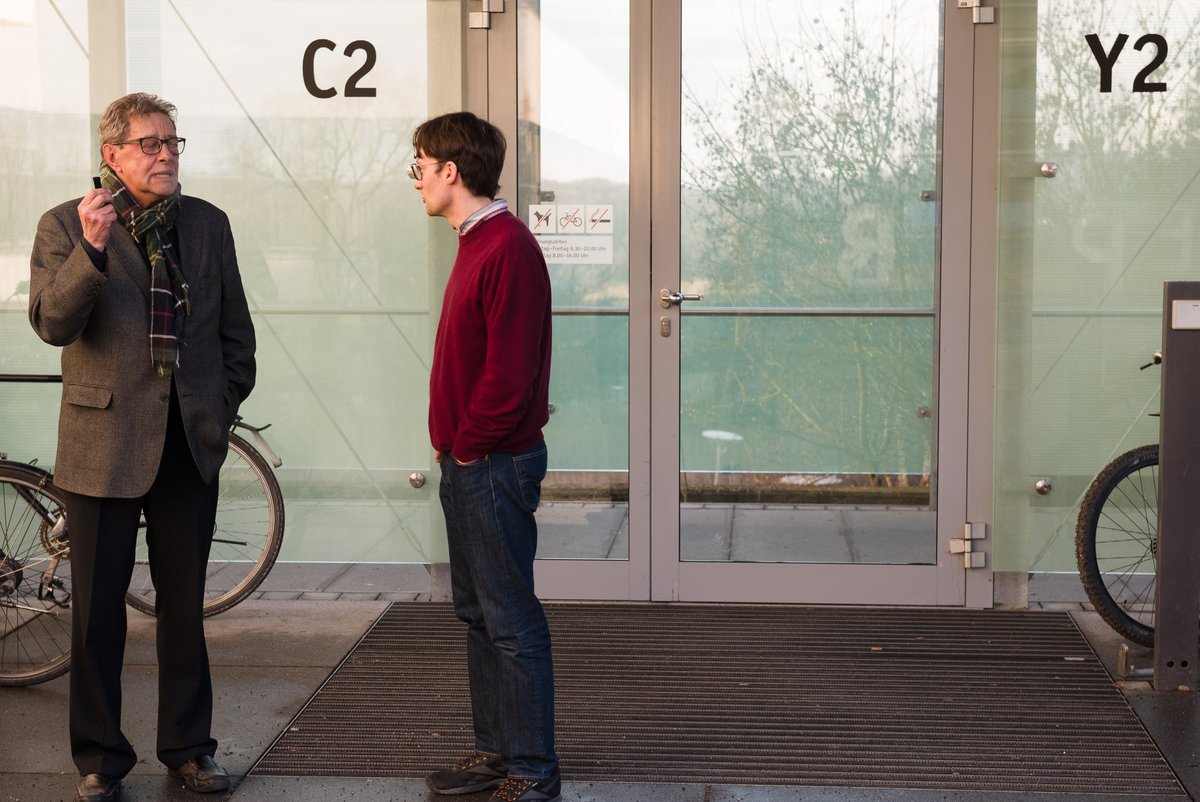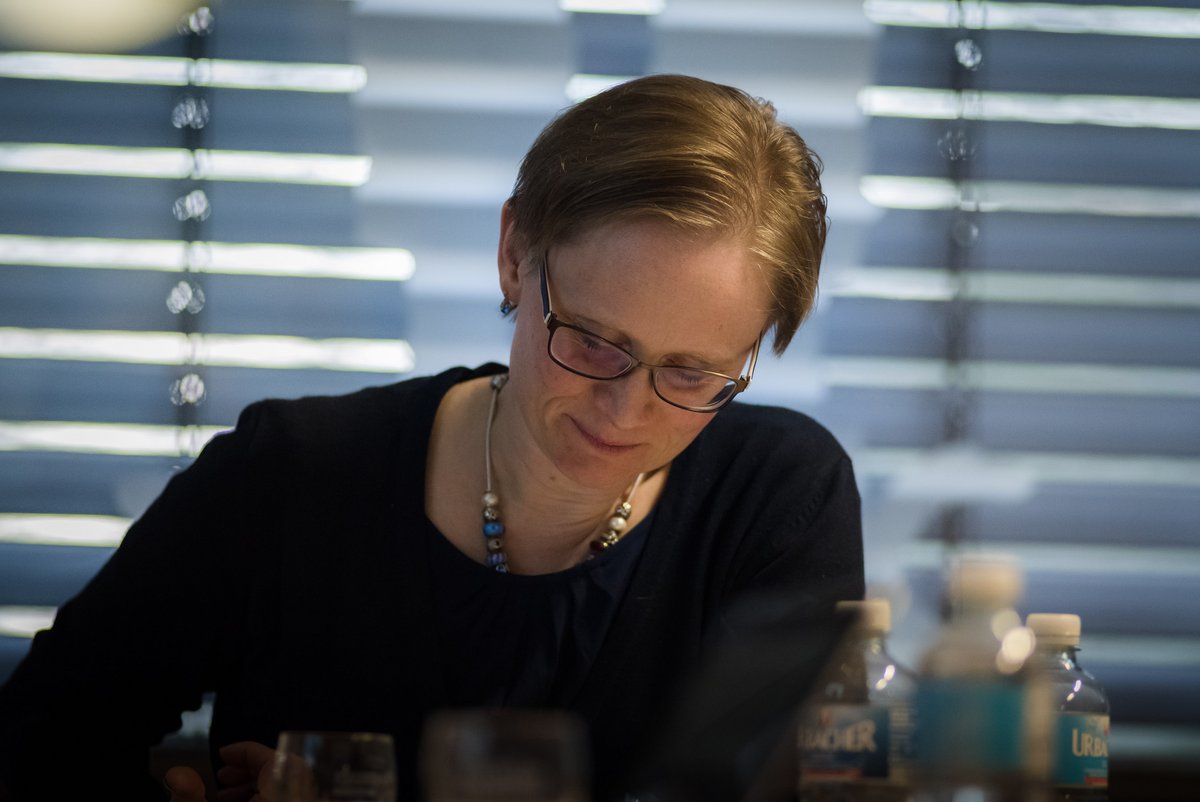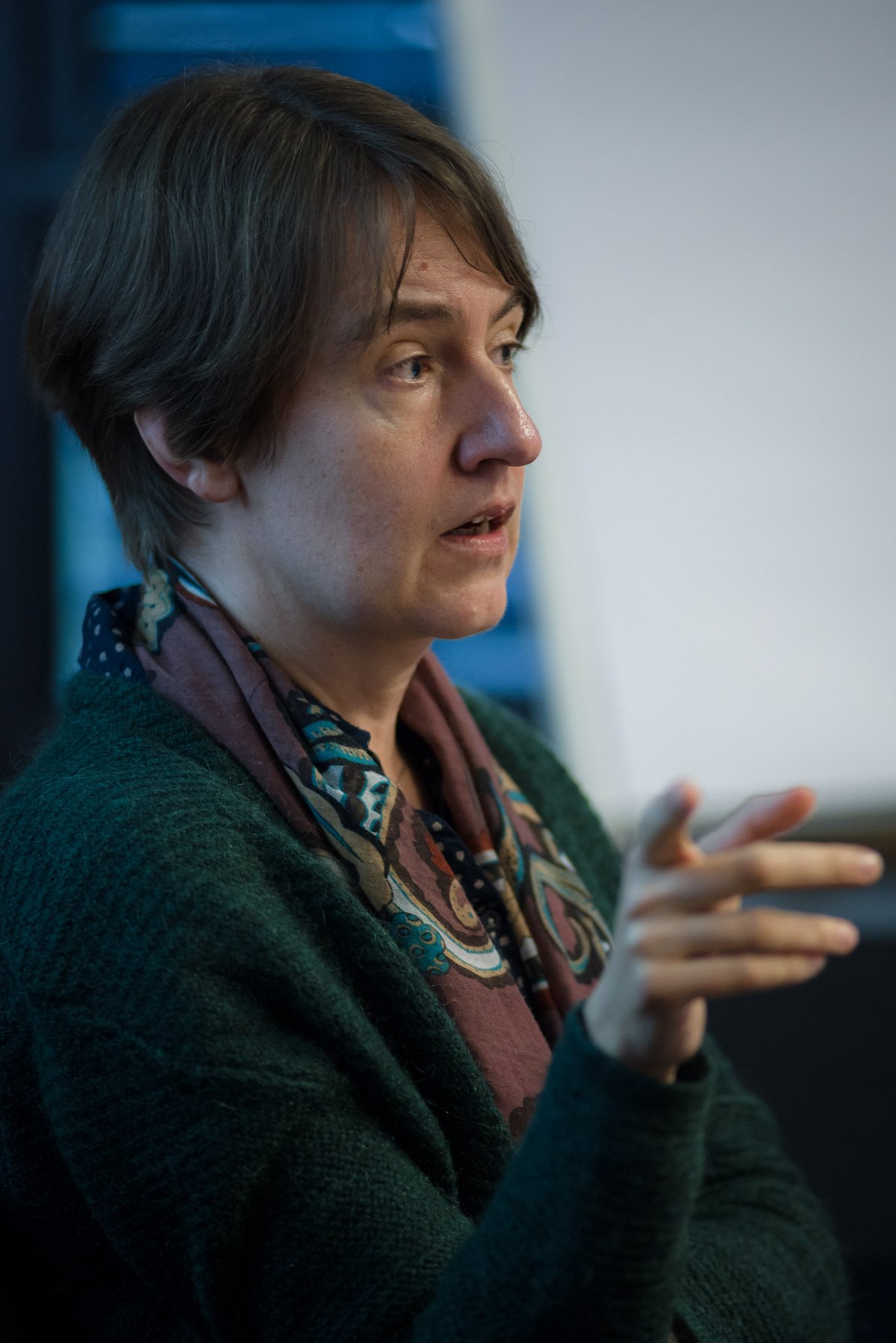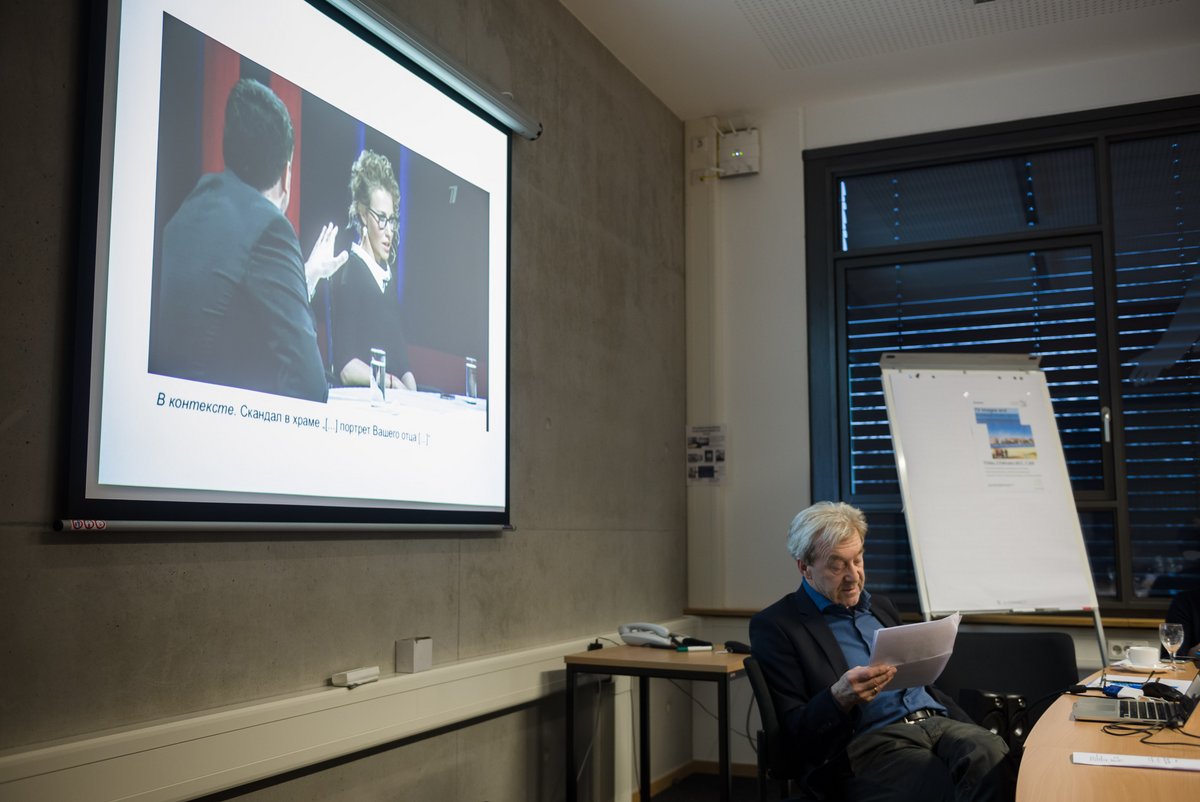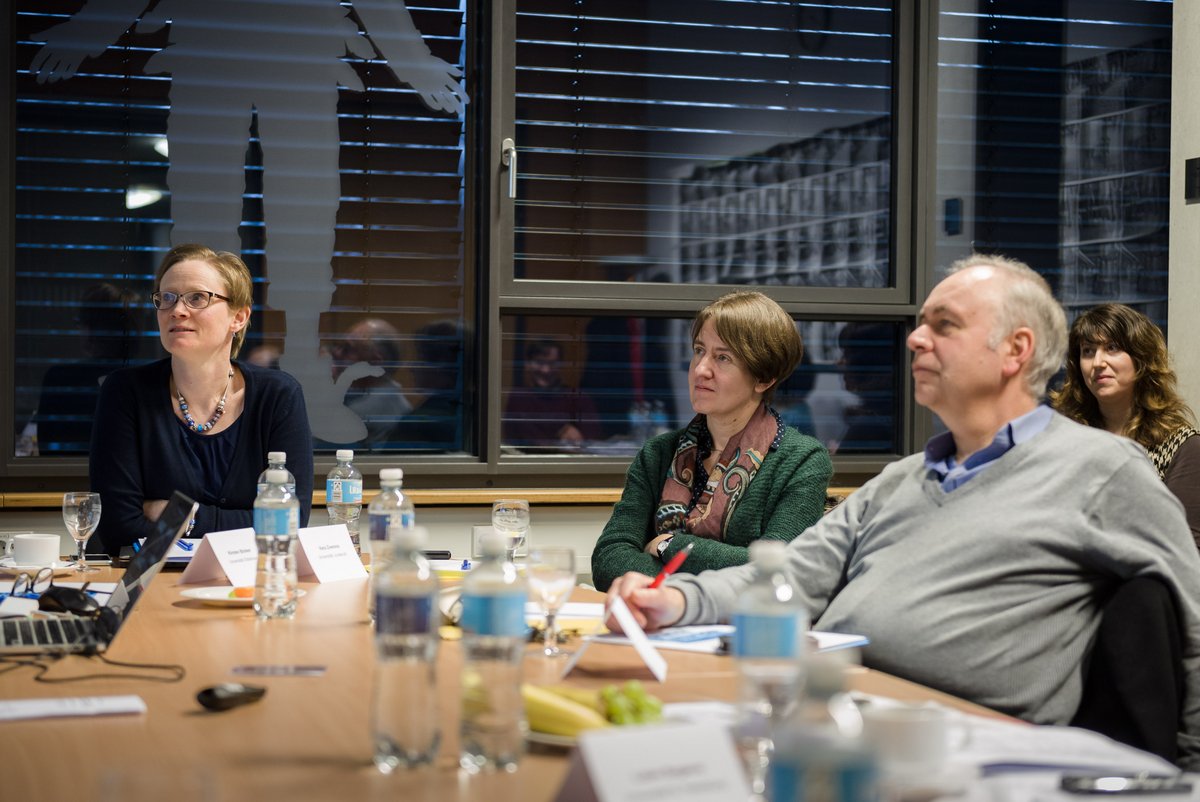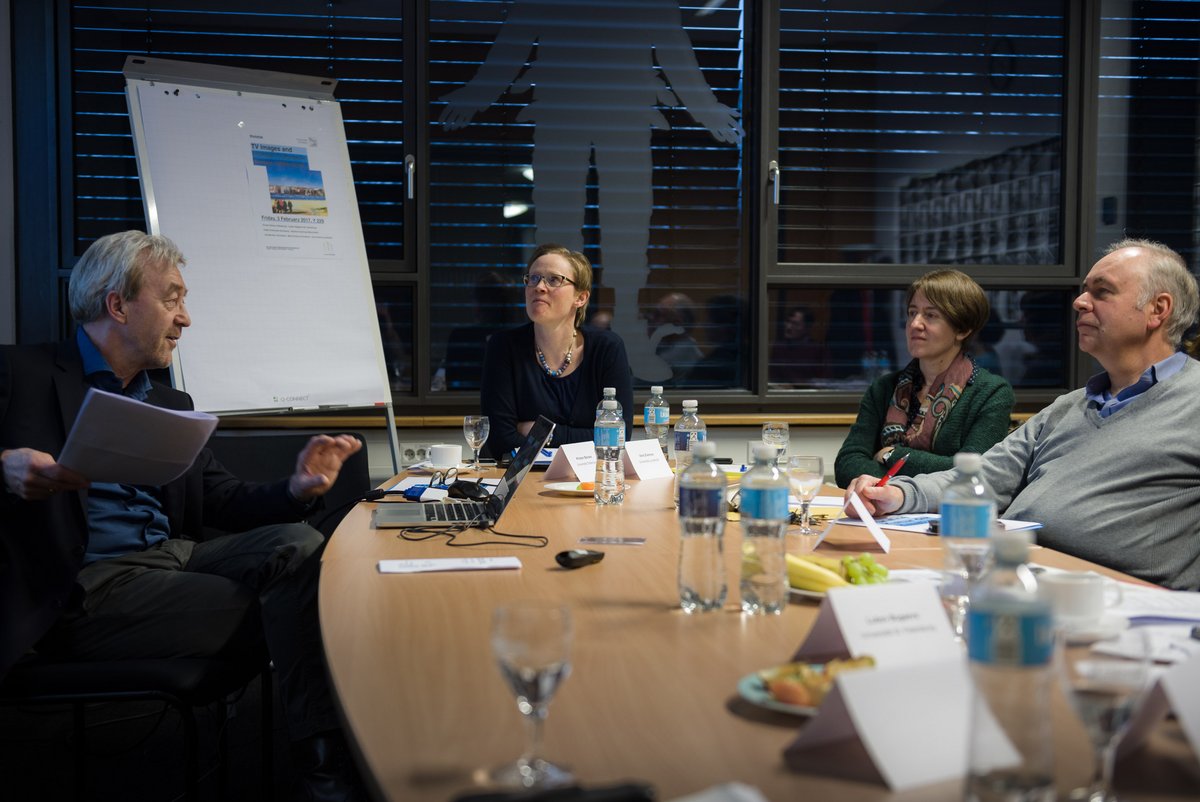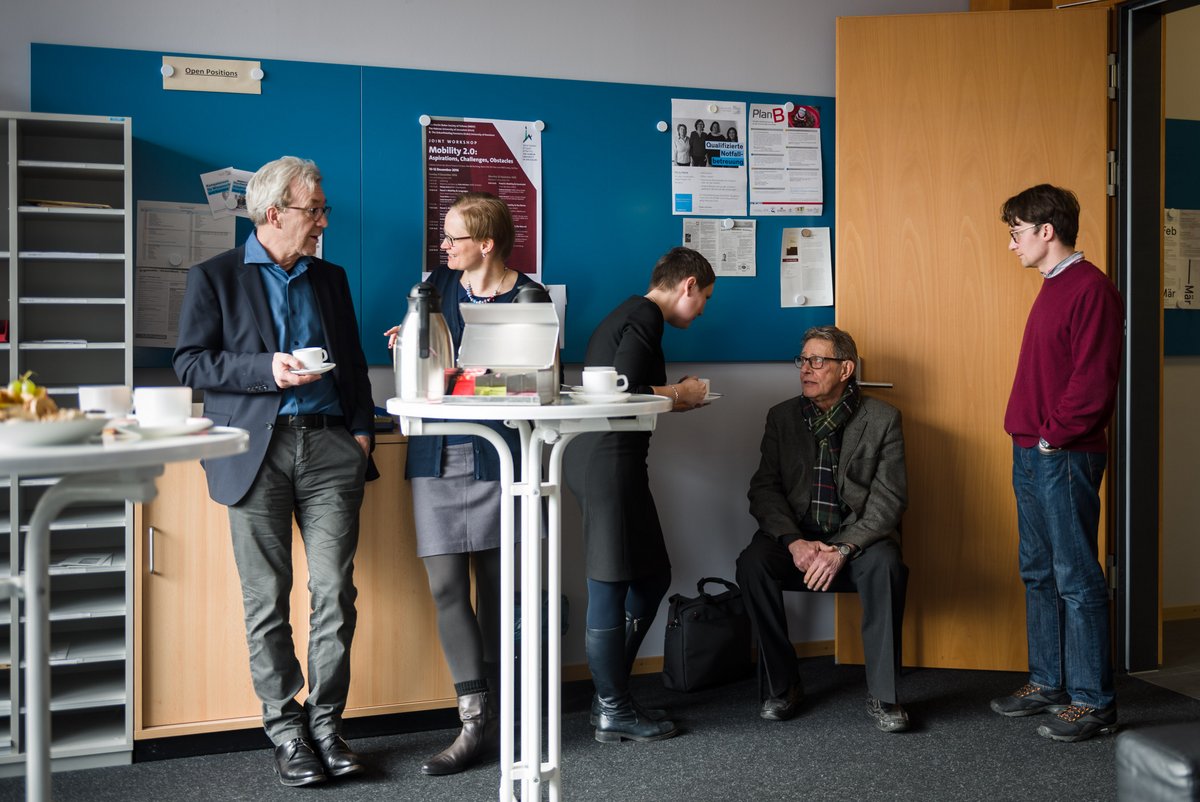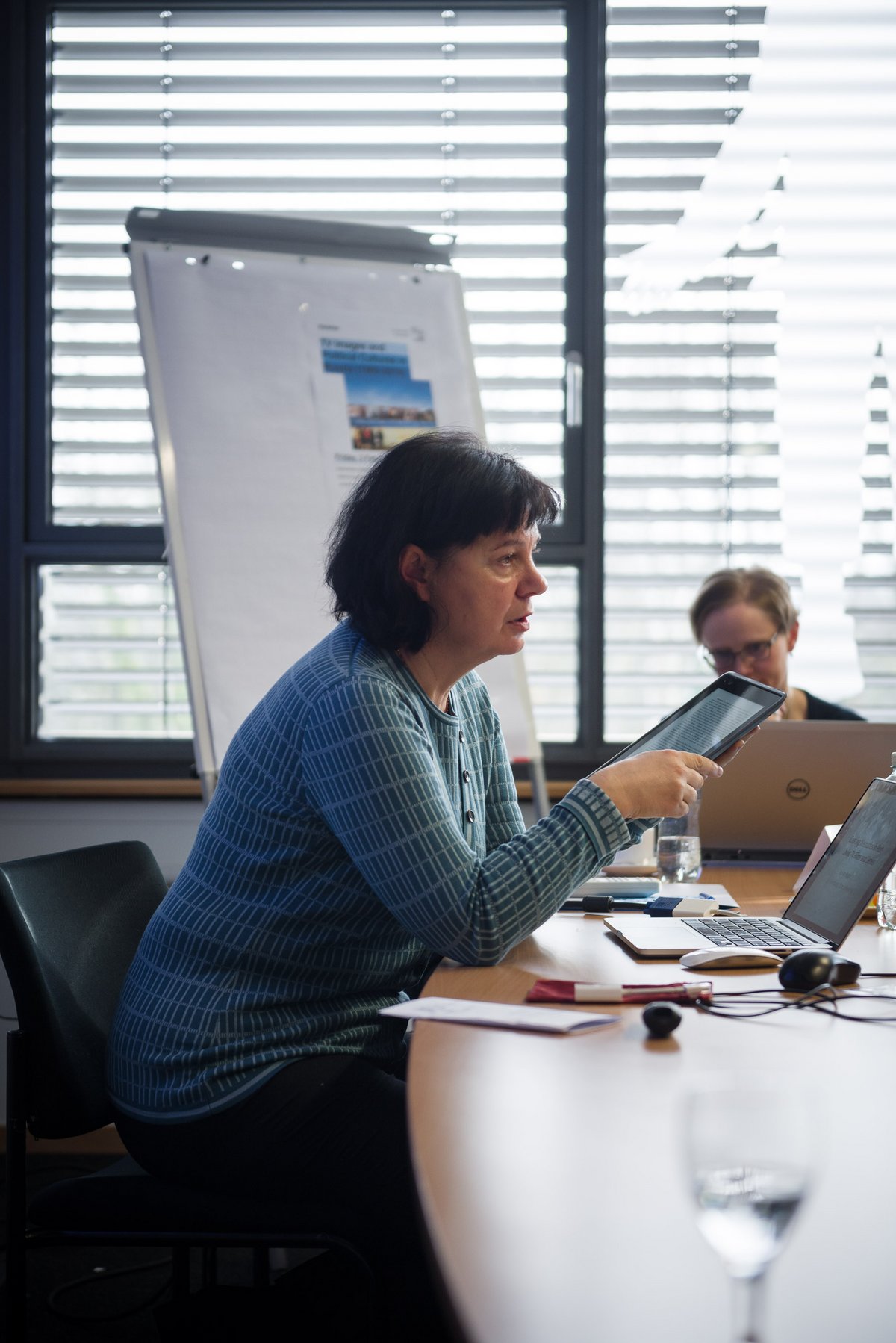TV Images and Political Cultures in Russia, 1960-2010
This workshop on February 3, 2017 examined some of the historical, medial and poetological aspects of Russian television culture since the 1960s. The workshop was organised by Maria Zhukova, Bridge Fellow at the Zukunftskolleg associated with the Department of Literature, with support of the chair of Slavonic Literature.
Text and photos: Innokentij Urupin
In recent years the study of television has developed into an increasingly precarious and uncertain venture. The supreme reign of television over the media landscape would appear to be over, suggesting that any attempt to engage with the medium would likely take the form of archaeology and retrospection. Nevertheless, despite its supposed capitulation to the computer and the internet, television continues to exert an enormous influence and remain a relevant living medium. Let’s not forget that it is the so-called “TV children” (McLuhan) who now govern society and whose new-found obsession for Twitter or Facebook hardly denies the fact that their political and performative strategies are still very heavily indebted to the medium of television.
Seen within the context of Soviet and post-Soviet Russian history of the past half-century, the political, social and cultural significance of television cannot be so easily overlooked either. A well-received line in the scholarship holds that television served as a mere tool for the totalitarian regime to communicate its message. And yet, this retrospective notion suggesting an almost monolithic state control over television almost seems too self-evident. Were the means of communication really so well adapted to the television medium in the first place? Or did television even act as a latent competitor to Soviet power and its word-based ideology? Ever since 2000, TV has served to enforce Putin’s political system and reinforce a nationwide collective self-assurance, but at what point in time did Russian political culture become so imbricated with television?
Addressing this broad range of questions, the workshop allowed participants from Germany, the UK, Russia and Finland to enter into active dialogue with colleagues from the University of Konstanz.
In the opening talk – “Addressing the Viewer-consumer: Consumer Issues on Soviet TV and the Change of Political Communication” – Kirsten Bönker (Oldenburg) demonstrated how consumer issues began to appear on Soviet television as early as the beginning of the 1960s. Rare footage from the regional Rostov TV-channel was brought into play, supported by material from the Leningrad and the Moscow central television stations. Bönker showed how Soviet television shaped the Soviet consumer, arguing that the discourse of consumption which operated with various feedback mechanisms represented a necessary re-adjustment to an openly “authoritative discourse” (А. Jurčak). With its specific immediacy and authenticity opposing the static written word, that is, TV could assume an important role in the everyday life of local viewers. Televised communication between the public, letter-writing viewers, staff, factories, retail services, as well as party and state institutions responsible for consumer issues became a form of entertainment in itself which, as Bönker asserted, kept audiences glued to their sets. Henceforth occupying a liminal space between the private and public spheres, Soviet television opted to focus on consumption and leisure, thus enabling viewers to interact with the authoritative discourse, to assimilate parts of it into their private perceptions, to reproduce it, but also to benefit from it. Even though some doubts were raised in the discussion about the authenticity of viewers’ letters, the crux of the matter is that such telegenic devices were employed (and indeed quite effectively) in the first place.
Whereas Bönker’s focus lay on the history of Soviet media culture, Maria Zhukova (Konstanz) examined in her paper “Speaking Images: TV Metaphors in Soviet Film” the representation of television in Soviet film from a distinctly poetological perspective; yet in Zhukova’s argumentation, television deconstructed rather than merely reshaped official Soviet discourse. Beginning with TV metaphors in print media, she discussed the changing pragmatics of such metaphors as water, mirror and glasnost used to characterise the medium of television in Russian films from the 1960s to the 1990s. With respect to selected films, the talk investigated how these metaphors, on the one hand, betray a cinematic suspicion of the television medium, and, on the other, reveal the aesthetic and communicative qualities of TV as “instantaneousness” and “total involvement in all-inclusive newness” (McLuhan) to be incompatible with a future-oriented socialist ideology. However, since the mid-1980s, as perestroika TV-makers began to deliberately harness these TV qualities, television began to resonate with the film medium on a greater level. For example, whereas water (as a cinematic metaphor for television) in the pre-perestroika Soviet period signified triviality and emptiness, during perestroika it references the flood of messages and facts in the films which by themselves seek to produce strong emotions and “truths.” In the discussion, Igor Smirnov (Konstanz) drew attention to the broader medial context, stressing a cinematic presence of the newspaper-medium on par with television (in particular in pre-perestroika films) – episodes potentially illustrating oppositions between the printed text, the spoken word and the image in Soviet culture.
The next speaker, Fabian Erlenmaier (Konstanz), also adopted a poetological perspective, investigating the aesthetic functions of TV-representation in contemporary Russian theatre in his contribution “TV Images on Stage: Post Soviet Theatre as a Political Institution”. In the image of a television placed on stage referring to an outside reality, the theatre, Erlenmaier argued, has reached a new level of “epic-ness” (the original epic drama of the 1920s had already been linked with radio and film by the likes of Benjamin and А. Piotrovskij). Such post-dramatic structural moments pointing towards a heightened self-referentiality of the theatre and a more general dissemination of the subject (Lehmann) are inextricably tied to the emergence of the television medium, as Erlenmaier argued. The talk then focused on Varvara Faer’s post-dramatic play BerlusPutin (2012) and argued that post-Soviet theatre should not only be considered an “observatory” of the cultural effects of television, but also a political institution with genuine social relevance: dissolving the strict margins of the picture frame-like stage, theatre observes, counters and opposes a “segmentation” and “distraction” of the public. Often plays confronting and challenging the reign of television take place outside theatre houses, advancing into public spaces such as streets or shopping centres. At the same time, as it was noted during the discussion after the talk, post-dramatic plays which are still performed on established stages have demanded a significant restructuring of theatrical space, literally “segmenting” the public as for example in М. Gacalov's "Telluria" (after the novel by Vladimir Sorokin).
In his talk “The Role of the Television Drama Serial/Telenovela Form in Post-Soviet Consensus Management, 2000-2010 (and Beyond)”, Stephen Hutchings (Manchester) in a sense took up the gesture of Bönker’s opening contribution, investigating the role of entertainment genres on TV as a tool of political control. However, in contrast to the consumer discourse of the Soviet years, Russian television of the 2000s and 2010s was very elaborate and intricate in its adaptation of entertainment formats originating in the West. Often dismissed as trite, superficial and politically anodyne imitations of Western mass culture, these productions have undertaken a series of bold and provocative innovations which appear, at least, to question and challenge political orthodoxies. Chief among these formats, the talk asserted, was the telenovela, or long serial. The genre’s ability to subtly blend social concerns with melodramatic plotlines rendered it a prime site for addressing the contradictions pertaining to central news and current affairs broadcasting. Engaging in a dialectic of ‘provocation’ and ‘pacification’, Hutchings argued, the telenovela ultimately served the Putin state as a means of consensus management, but not without bringing to the surface some of the key identity conflicts besetting it. To show how exactly the controversies were administered, the talk concentrated on the series Škola (School, 2010, Channel One) and Londongrad (2015, STS). In the first case, Hutchings showed how a provocative TV-representation of the school institution enraged the pro-governmental audience so much that Putin was forced to intervene and with a pacifying statement put their concerns to rest. The second case was used in order to illustrate how even a seemingly cosmopolitan plotline could in turn ensure and stabilize “patriotic” values. In the discussion following the talk, attention was drawn to the fact that the combination of shocking images with the notion of “patriotic education” is one of the key tenets of Russian television today.
In her talk “Creating Memories in Post-Soviet TV Films and Series” Lyubov Bugaeva (St. Petersburg) also dealt with contemporary Russian television, but from the angle of current TV-representations of bygone eras of the past. Bugaeva addressed the practice of appropriating historical documentary material to non-documentary formats. After reviewing different conceptions of the documentary in Soviet film history (such as "kinopravda", cinematic truth by Dziga Vertov, or the compilation film by Esfir Shub) Bugaeva demonstrated how today’s television employs historical footage as a trigger for nostalgic feeling vis-à-vis an imaginary, utopian past. Fragments of Soviet documentaries and newsreels in post-Soviet non-documentary TV films and series are employed both as referential tools and more importantly as rhetorical devices designed to intervene into contemporary reality. As a consequence, so Bugaeva emphasized, these fragments create memories rather then merely awakening them – a finding that certain neuroscience studies seem to confirm. Blurring the boundaries between fiction and reality in this way, such representations have become a powerful tool for manipulating the spectator, as for example in the Channel One series Poslednjaja vstreča (Last Meeting, 2010) where documentary scenes are subtly interlaced with the main fictional action.
Even if in the discussion the referential status of documentary footage itself was (once again) problematized, the tendency towards manipulative simplification of television material in Russia after 2000 cannot be overlooked – this was the central concern of the next talk. Here Vera Zvereva (Jyväskylä) focused on a selection of news programs airing on the main Russian TV channels, whose task it is to visually, textually and emotionally undergird ideological messages of state power. The paper entitled “Russian Television Today: Challenging the Challenges to State Ideology” sought to show how in this task Russian television has become a basis for the construction of popular political culture. This tendency already made itself known during Putin’s first presidential term starting in 2000, after television was more or less able to freely challenge the state monopoly on meanings in the years of perestroika and throughout the 1990s. Analysing various news formats, Zvereva revealed a substantial amount of story-telling, with news becoming the “series” that fulfilled an apparent widespread need for simplistic messages and meanings. Within the news context, discourse is dominated by recurring narratives of the “father president”, “Russia in a ring of enemies”, “Russian achievements” etc. and directly appeals to emotions such as anger, sarcasm, compassion and pride. Actual “news” assumes a subordinate role vis-à-vis these narratives and the associated emotions: for example, lacking stories of war and conflict, state TV was left with no other alternative than to report the bombing of ice-jams in Russia by SU-34 jets. Drawing on sociological studies (L. Gudkov, A. Levinson), Zvereva sees in television with its upholding of archaic modes of culture a substitute for Russia’s still undeveloped social institutions. The talk also noted that Russian TV news programs fail to look for references in alternative media such as the internet. Responding to a remark made by one of the participants that Russian TV did in fact cite social media, Zvereva argued that such citations are often taken out of context so as to serve a different, that is, TV agenda.
In the final talk of the workshop – “Telecratic Image Politics: Art Debates on Russian TV (2000-2010)” – Jurij Murašov (Konstanz) started by contextualising TV within the medial landscape of Soviet and Post-Soviet culture. In so doing, he emphasised the different cultural effects generated by typography and television respectively. The dominance of the printed word in the Soviet period stands in contrast to the “telecracy” of the 2000s and beyond. Against this backdrop, Murašov examined three prominent TV programs of the 2000s: Maksim Ševčenko's V kontekste (In the context), Vladimir Solov'ev's Poedinok (Duel) and Arkadij Mamontov's Special’nyj correspondent (Special Correspondent). Specifically, Murašov focused on the televised art debates aired on these shows. As he sought to demonstrate, these televised art debates were not only concerned with the mere moral disqualification of new art practices and the confirmation of a Russophile national and Christian orthodox view of the world. In negating the autonomy of the visual in art, they effectively harnessed the affective and magical potential of images to speak to the masses. This in turn ensured public approval for telecratic power: through the medium of television and the resulting public “acclamation” (Schmitt), the sum of administrative and judicial procedures gained political legitimacy. The discussion then touched on the empirical, or rather sociological implications, questioning the possibility of “acclamation free zones” on the part of both production and viewing. In a sense, this turn in the debate demonstrated that the synergy of neighbouring approaches attempted by this workshop is a necessary step if the study of television is to go forward.

